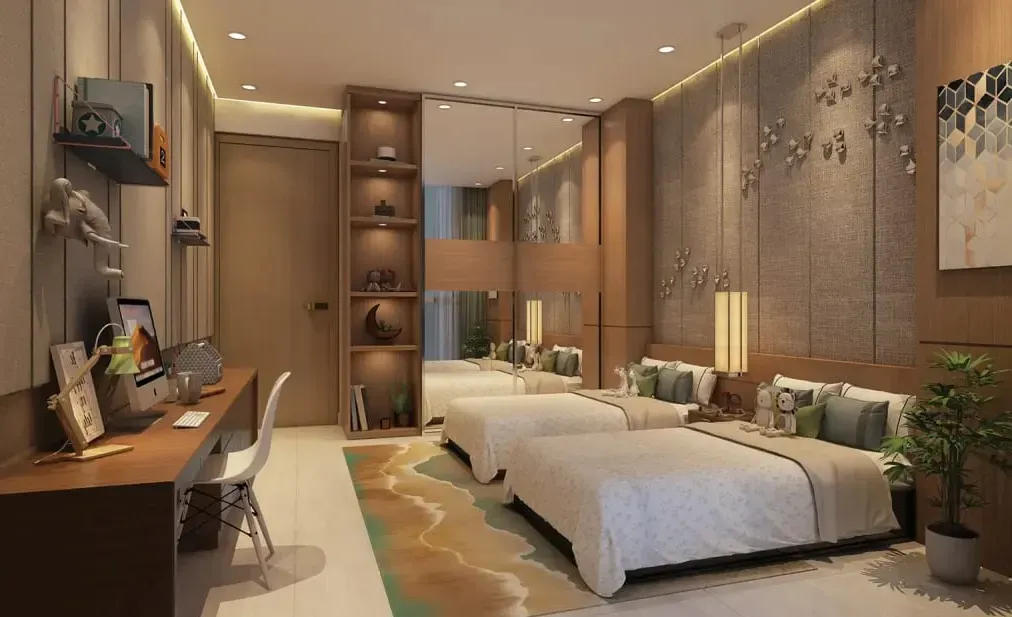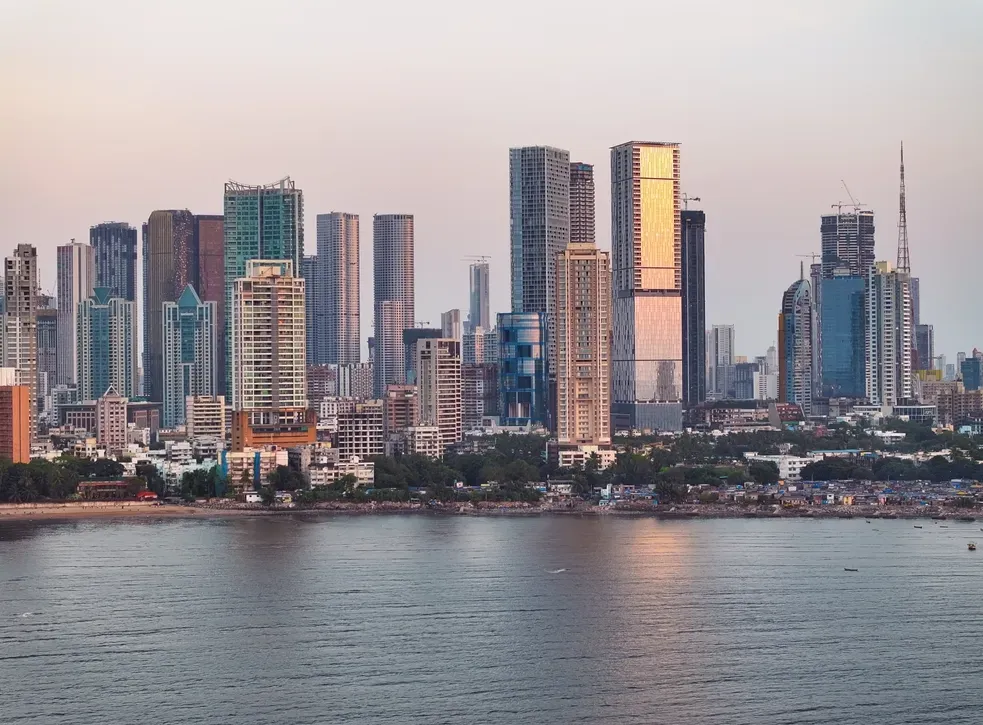Do 3BHK Homes in Mumbai Appreciate More Than 2BHKs?

By
Shrusti Naik
Posted on October 14, 2025. 10 mins

Introduction

When investing in Mumbai real estate, homebuyers and investors often debate: Will a 3BHK (3 bedrooms, hall, kitchen) offer better long-term appreciation than a 2BHK? After all, 3BHKs cost more upfront, require higher upkeep, and might have lower percentage gains, but they also may command stronger demand from families and premium buyers.
In this article, we compare 2BHK and 3BHK properties in Mumbai from multiple angles, price levels, past price appreciation, rental yields, demand trends, regulations and taxation, and risk. Using fresh Mumbai / Maharashtra data (2023–2025), I aim to provide a grounded, India-first perspective. You’ll leave with clarity on when (and if) a 3BHK is a smarter bet for wealth creation in Mumbai.
Key Stats at a Glance
| Metric | Data / Estimate | Year / Period |
|---|---|---|
| Average ticket price in Mumbai (Jan–Apr) | ₹1.57 crore | 2025 vs ₹1.02 cr in 2021 → +54 % |
| Mumbai MMR annual price growth rate | ~ 8 % | 2024 |
| Q2 2024 Mumbai residential price growth | ~ 6.5 % QoQ | Apr–Jun 2024 |
| Suburb (Thane) appreciation over 3 years | +46 % | 2022–2025 |
| Mumbai median price per sq ft | ₹27,500 / sq ft (YoY +6 %) | FY 2024–25 |
Interpretation: Mumbai property prices are rising steadily, though with micro-market variation. A 3BHK’s higher base price can mean larger absolute gains, but percentage gains may lean in favor of well-chosen 2BHKs in the right locality. Also read, Upcoming Mumbai Metro Corridors and Their Impact on 2BHK Property Values
Mumbai Real Estate Landscape: Trends & Price Levels
1. Mumbai’s average price rise and segment shifts
- Between January-April 2021 and the same period in 2025, the average transaction ticket price in Mumbai Metropolitan Region (MMR) surged from ₹1.02 cr to ₹1.57 cr, a jump of ~54 % over four years.
- In FY 2024–25, Mumbai recorded its highest-ever flat sales: 49,191 units worth ₹1,24,138 crore, up ~26 % year-on-year. The median price per sq ft rose ~6 % to ₹27,500.
- According to MagicBricks, in Q2 2024, Mumbai residential rates rose ~6.5 % QoQ, with demand rising ~6.7 % and supply ~5.3 %.
- In the suburb of Thane, average price per sq ft jumped from ₹13,550 to ~₹19,800 over three years, ~46 % growth. These trends show robust upward momentum, though not uniformly across all localities or configurations.
2. Price brackets for 2BHK vs 3BHK
As of 2025 (typical ranges in suburbs / mid-segment / premium zones) :
| Configuration | Typical Localities | Price Range (₹) |
|---|---|---|
| 2BHK (suburbs) | Goregaon, Thane, Navi Mumbai | ₹1.5 cr – ₹3 cr |
| 3BHK (mid / luxury) | Powai, Worli, Andheri East | ₹3 cr – ₹6 cr |
| 3BHK (premium) | South Mumbai, Bandra, Malabar Hill | ₹6 cr+ |
Because 3BHK units tend to lie in higher-end developments with better finishes, their base appreciation may outpace generic 2BHKs in lower segments. Also read, What Salary to Afford a 2BHK in Mumbai in 2025
3. Micro-market divergences
- Localities in central / island Mumbai (e.g. South, Central Mumbai) have seen slower or even negative shifts: one source notes a ~21 % decline in some central areas over three years.
- Meanwhile, suburbs and emerging nodes (Thane, Navi Mumbai, areas along new metro / highway corridors) are seeing faster growth.
- Redevelopment projects in Mumbai are expected to add ~44,000 new apartments by 2030, with 73 % in western suburbs (Bandra–Borivli corridor). [News] – this will reshape supply pressure zones.
Thus, a 3BHK in a rising suburb may yield better gains than a 2BHK in a stagnant central zone.
Appreciation Comparison: 2BHK vs 3BHK - what the math says
Let’s model a simplified example (not actual market but illustrative).
- Assume a 2BHK costs ₹2 cr in 2025 and appreciates at 8 % annually. In 10 years, future value = 2 cr × (1.08)^10 ≈ ₹4.32 cr.
- Assume a 3BHK costs ₹4 cr (double) and appreciates at 7 % (slightly lower due to base effect). Future value = 4 cr × (1.07)^10 ≈ ₹7.84 cr.
Absolute gain:
- 2BHK → gain ~ ₹2.32 cr
- 3BHK → gain ~ ₹3.84 cr
Percentage gain:
- 2BHK: 116 %
- 3BHK: 96 %
Conclusion: The 3BHK delivers more wealth in absolute rupee terms, though its percentage return is lower in this hypothetical. Over time, the fungible premium of a 3BHK gives leverage in high-end segments.
However, the actual realized appreciation depends heavily on locality, connectivity, builder reputation, amenities, and project quality. Also check out, The Ins and Outs of Property Management for Landlords: Maximizing Your Rental Income
Demand & Rental Yield: A nuanced view
Demand drivers favoring 3BHK
- Family buyers & upgraders: Many middle to upper-middle families prefer 3BHKs for additional room / flexibility (study, home office, guest room).
- Premium / HNI demand: 3BHKs often occupy premium developments, which attract HNI buyers who are less price-sensitive.
- Scarcity premium: In good localities, larger apartments are fewer, adding scarcity advantage.
Rental yield imagination
Rental yield in Mumbai is generally low relative to capital appreciation. Many prospects:
- A 2BHK in a suburban location might get ~2-3 % yield (annual rent / property cost).
- A 3BHK in a premium node might command higher rent per sq ft, but its higher capital cost drags down yield percentage.
- For investors prioritizing yield (cashflow), 2BHKs could outperform 3BHKs in certain zones.
Thus, if your horizon is short to mid-term with reliance on rent, 2BHK may yield better ratios; if long term, appreciation may dominate.
Risks & Downsides of 3BHK bets
- Higher capital tie-up and maintenance cost: More floor area, higher property taxes, society charges.
- Liquidity trade-offs: Fewer buyers for expensive homes, slower resale in downturns.
- Market saturation: If many developers flood large-unit supply in a micro-market, appreciation may compress.
- Regulation / taxes: Stamp duty, capital gains tax (20 % long-term + indexation), and other costs scale with price.
- Affordability shift: In times of economic stress, demand may shift toward smaller units, hurting large-flat demand.
Verdict: Do 3BHKs outpace 2BHKs in the long run?
Yes, but conditionally. A 3BHK in a growth corridor with strong connectivity, infrastructure backing, and scarcity can deliver superior absolute value accumulation. But a mis-located or overpriced 3BHK may underperform a well-sited 2BHK. Also read, 2BHK in Mumbai: Best Localities for Price & Lifestyle 2025
When 3BHKs are better:
- Buying in up-and-coming suburban nodes (e.g. Thane, New Mumbai corridors)
- In projects with premium amenities or strong developer reputation
- Assuming a 10+ year horizon and capacity to carry maintenance costs
When 2BHKs may be smarter:
- In central, saturated locales where growth is stagnant
- When liquidity or yield (rent) is more important than capital gains
- For relatively risk-averse buyers with lower budgets
In short, choosing which unit in which location matters more than the label “2BHK” or “3BHK.”
Practical Tips for Mumbai Buyers / Investors
- Check local CAGR: Don’t assume city average; examine 5–10-year CAGR for that micro-locality.
- Proximity to infrastructure: Metro stations, highway links, upcoming redevelopment corridors matter more than square footage.
- Builder track record / quality: Prefinished or branded projects command premium and better resale.
- Consider resale demand: In rentals or resale, 3BHK appeals to families, but niche segments like small households will stick to 2BHK.
- Plan exit timeline: Real estate is illiquid; ensure you have buffer for holding longer than planned.
Conclusion

In Mumbai’s complex property ecosystem, 3BHK homes often hold an edge in absolute value creation over long periods, especially if located in growth corridors backed by infrastructure. That said, 2BHKs may outperform on a percentage basis or in liquidity / yield metrics in certain zones.
Rather than choosing purely on “2BHK vs 3BHK,” your focus should be on micro-market selection, connectivity, and developer / amenities quality. A well-placed 2BHK can outperform a poorly placed 3BHK. But in premium nodes with long horizons, 3BHKs remain a potent wealth-building tool.
For those in pursuit of their dream home, investment opportunities, or a sanctuary to call their own, Jugyah provides top housing solutions with its intelligent technology.
Frequently Asked Questions
-
Is the long-term capital gains (LTCG) tax different for 3BHK vs 2BHK? No, LTCG tax treatment is the same: 20 % tax with indexation on residential property held more than 24 months. The tax burden is higher in absolute rupees for 3BHKs, because gains are larger.
-
Which Mumbai suburbs show strongest growth recently? Thane has delivered ~46 % price growth over 3 years. Micro-markets like Jogeshwari–Borivali also saw record sales in 2024–25.
-
Does 3BHK always give better rent yield? Not necessarily. Because cost is higher, the percentage yield (rent ÷ cost) may be lower than a 2BHK in a good area. But absolute rent may be higher.
-
Should I buy 3BHK in island city vs outer suburbs? Historically, central Mumbai has seen stagnation or decline in many localities. Outer suburbs aligned with infrastructure show stronger upside.
-
What unit size is optimal for families and resale in Mumbai? Many families prefer 2.5–3 BHK unit sizes ~1,000–1,400 sq ft (carpet) in suburban projects. These balance affordability and appeal.